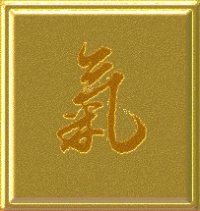The Ki of Aikido - Energy, Self and Mind
Added Mar 13, 2003
| 14,673 Reads
The Ki of Aikido An
Oriental Concept of “Energy” “Self” and “Mind” Introduction This article is the first as a three part series. This article will introduce you to the concepts of Energy, Self, and Mind, from an Oriental perspective. The second article in the series will talk about cultivating “ki” within one’s self. The third article will discuss how an Aikido practitioner attempts to sense, understand, and blend with the “ki” of their partner, and point to how you can use such a mindset in your daily life. Preface There are many different ways to
perceive, utilize, and benefit from energy. What I offer here is one of many
ways. Indeed when I do other kinds of activities I perceive of and work with
energy in quite a different manner. What follows is my experience of energy
while performing Aikido over the course of more than twenty years. Certainly
there are likely to be many other Aikido practitioners that would explain their
experiences and beliefs in a manner that is somewhat different than mine. I
offer you here, one experience, my experience, and thus all that I say is part
of my belief system, and not at all necessarily THE truth. Aikido Aikido is a Japanese martial art, and
it does not have an attack form. We do not kick, punch, or in any other manner,
attempt to hurt our opponent. The meaning of Aikido:
When we sense and move with the energy that is manifesting throughout the universe we find that we have a greater ability to live a life that is healthy and fulfilling.
“Ki” In Aikido we believe that all human
beings utilize and share a common energy source (ki) that helps to run and maintain our environment as well as our
individual human systems. We believe that since we all share a common energy
source, that in some important way we are all truly members of the same family,
and truly sharing our lives with all of nature. We do not have an attack form in
Aikido, because attacking an opponent would be like attacking a family member
that you love. Attacking an opponent would also be like attempting to damage the
flow of Universal energy in the world, and such acts are likely to have many far
reaching consequences. In the Japanese language words that use the concept of “ki” are common.
The
origin of ki? Where does ki originate from? In Aikido the answer is poetic in nature rather than scientific. It is suggested that ki was “born” at the same instant as the rest of the universe, and that we are all born from the ki of the universe. Ki is considered to be an energy that we all have equal access to. It is an energy that courses through our system if we do not restrict it. In Aikido we believe that excess tension physically and emotionally, fear, hate, greed, and anger, all cut us off from the universal source of ki. Our daily practice involves working at maintaining a balanced state physically and emotionally, and indeed, practicing ways to cultivate physical and emotional balance is much of what the study of Aikido is about. In Aikido physical and emotional balance are meant to be two sides of the very same coin. Physical balance helps to engender emotional balance and health, and vice versa as well. Often in my professional work with individuals I find myself first addressing the clients physical balance when they come wanting to resolve emotional issues, and I do the reverse as well. I often first address or explore how emotional imbalance might lead to the physical difficulties they are experiencing. “Ki
signature” mind, spirit—Energy manifests as spirit, spirit manifests as mind Energy manifests within each individual as spirit, spirit manifests in each individual as mind. In some way that is a mystery to all of mankind, the freely available energy of the universe is transformed by each person into one’s own unique “ki signature”, spirit, mind. No two people have the same exact “ki signature”, just as no two people have the same exact written signature. No two people have the same exact spirit, no two people have the same exact mind. The unique way that we each take in, utilize, and expend energy, can be considered to be our “ki signature”, mind, or spirit. Each person starts with the same source of energy, and manifests this energy in a way that will never exactly be duplicated by any other human being. Thought, body structure, and movement, shape the flow of ki, into spirit/mindThink of the freely flowing water of
a powerful river that comes upon a series of fairly large rocks spread out
across the river bed and extend up beyond the water’s surface. These rocks
affect the flow of the river but they do not change the nature of the water
itself. Ki flows through the river bed of our brain and body. Our thoughts, body
structure and movements, are like the rocks in the river bed. These are the main
elements that shape ki into individual mind, or spirit The flow of ki is
uniquely transformed by each human being, but the nature of the ki itself, is
not altered in the process. Just as the pattern of rocks spread out along the
river bed is never exactly duplicated in any other place on earth, the pattern
of our thoughts, body structure, and movement is also never exactly duplicated.
All mind is similar, but no two minds are exactly alike. A heartfelt understanding of the nature of our spirit will help us to create a healthy alignment of our thoughts, body structure, movements, and actions. When every aspect of our self is fully aligned we have a much greater ability to think, feel, and act in accordance with what is best for us in any given moment. We are better able to adapt and change in a manner that is supports the well being of our entire self and our surroundings. The
misnomers of “mind-body” and “mind and body” A definition of “mind” that I often use it in my work, is the following: “Mind is
a dynamic, self-organizing, creative system, capable of overcoming physical and
temporal constraints. Mind uses and manufactures energy in order to support the
self and one's surroundings, trade information, and adapt to change.” When considering this definition of
mind, we can say that mind manifests equally in the body and in the brain in the
skull. Because of this I believe that the terms “mind-body” or “mind and
body” as used in the Western world, are somewhat missing the mark and tend to
lead to a certain degree of misunderstanding. If you ask a Japanese person to
point to their mind, usually they will point to the area of their heart, or they
will point to their lower abdomen. If you ask the average Westerner to point to
their mind they will point to their head. This is why I think the terms
“mind-body” and “mind and body” were developed in the Western world. I
believe that the average Western person thinks of the term “mind” in
relation to “thinking” or “thought”. Oriental philosophy considers
“mind” to be immanent in both the body and the brain. In Aikido we say that
we practice in order to calm the mind, by coordinating our thoughts, the actions
of our body, and our breath. Or we say that we practice in order to further
empower and actualize our mind by coordinating our thoughts, physical actions,
breath, and spirit. When looking to calm our mind we give our primary attention to calming our breath and our heart beat, which will tend to lead towards a relaxing of our musculature and a slowing down or cessation of our internal dialogue. If we calm our body we will tend to calm our cognitive thought processes. Calming the mind can also be accomplished by giving primary attention to the speed, rhythm, and tone of voice of our internal dialogue. If we calm our cognitive thought processes we will tend to calm the body. When we calm both our cognitive thought processes and our body, then we calm our mind. Cognitive mind and somatic mind are part of a recursive feedback loop. You can’t affect one without affecting the other.
Would you like to read the second and third articles
in this series? If
you have enjoyed what you have read here, and would like to read the second and
third articles in this series, please go to the Seishindo website and subscribe
to our complimentary newsletter that comes out once every two weeks. Subscribing
won’t take you more than a minute, and when and if you want to unsubscribe,
this will also only take a minute of your time. Rest assured that we do not use
our mailing lists for spam, and we do not sell or rent our mailing lists to
others. In
order to subscribe, please go to: http://www.seishindo.org/newsletter.html I
look forward to your feedback, and your participation in the Seishindo
community. With
warm regards, Charlie Some background about myself, to help you further understand my perspective: Charlie Badenhop
is an internationally respected healer, consultant, and coach. He is the
originator of Seishindo, a discipline
that inspires and empowers human potential and well being in individuals and
organizations. He is a fourth degree black belt and registered instructor of
Aikido in Japan, a certified trainer in NLP, and a long term practitioner of
Self-relations therapy, Ericksonian Hypnosis, and the Japanese healing art of Noguchi
Sei Tai. He has been living, working, and studying in Japan for the
last eighteen years and has students throughout the world. His friends in Japan
sometimes say. “He has an American face and a Japanese heart.” Charlie is
able to offer his clients a unique double perspective. A melding of Eastern and
Western sensibilities, and wisdom. Charlie's
workshops are known for their magic, depth of experience, and celebration of
life. He weaves together theory, poetry, music, movement, practical
applications, and a clear encounter with one's core identity. People come to his
workshops and private sessions, to savor in a supportive atmosphere, the
reintegration of their thoughts and feelings into "a heartfelt experience
beyond words." If
you would like to find out more about Charlie’s work and read other articles
by him and some of his colleagues, please go to his website at:
Added Mar 13, 2003
| 14,673 Reads
🗣 Chat!
|

 Home
Home
